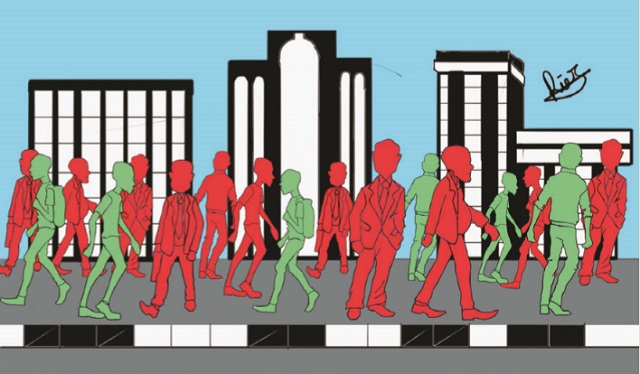
High HIV prevalence among men raises need to embrace new interventions targeting them
Kampala, Uganda | FLAVIA NASSAKA |Preliminary results of the 2016 Uganda Population HIV Impact Assessment (UPHIA) survey released recently have raised the concern of health sector workers on the issue.
Preliminary results of the survey showed HIV prevalence to have generally fallen to 6% from 7.3% in 2011. But the survey conducted in 12483 households where men and women of ages 15 to 64 years were interviewed across the country also showed that an estimated 1.3million live with the virus. While in different cohorts categorized prevalence was seen to be declining, the cohort of older men of 45 to 49 years remained highest at 14% whereas that of women in the same age group was at 12.8%. Also, in 2016 alone, 14348 men died of AIDS compared to 9600 women.
The surveys show 45% of HIV infected men have not yet been diagnosed and of those who know they are positive 48% have not yet been initiated on treatment despite the new guidelines of Test and Treat where the World Health Organisation has recommended that whoever is tested positive is initiated on antiretroviral drugs immediately.
Armstrong Mukundane, the National Coordinator HIV at Communication for Healthy Communities, these figures highlight an urgent need for healthcare managers to come up with interventions specific for this group if the epidemic is to be controlled.
“People in this age group are a threat because they have money, they have power, big positions at work places and can lure young girls,” he said.
According to Dr. Achilles Kiyimba of the Infectious Diseases Institute (IDI), “HIV is now concentrated among older men because they are shy”. They fear to be seen in the queues at health facilities. Instead they say they do not have time to go to the facility and when positive claim they are still strong and do not need to start treatment. Kiyimba adds that youth, who face a similar problem of shyness, have also reported high prevalence of HIV.
Dr. Joshua Musinguzi, the head of the AIDS Control Programme at the Ministry of Health, says there has been a gap among men when it comes to both testing and treatment.
“UPHIA results showed us prevalence among young girls of 15 – 24 years who have been our greatest worry actually reduced from 3.7 to 3.1% but now men, who are the main source of HIV for these girls, don’t know their status and are not on treatment,” he says.
He says the low involvement of men in HIV programmes has got even President Yoweri Museveni involved. In June the President launched his Presidential Fast Track Initiative to ramp up support and response at all levels; from the community to national leaders.
The Differentiated Service Delivery Model
The Ministry is embracing a new strategy – the Differentiated Service Delivery Model (DSDM) which they hope will help more men to access treatment without queuing up at health facilities for drugs.
This patient-centered model involves people who are adhering to treatment forming groups and receiving their medication in the community without frequenting the health facility. This model, in addition to encouraging men who fear being seen in the queues at health facilities, is also meant to reduce the congestion there. The congestion at health facilities is expected to increase because, under the `Test and Treat’ program, 1.3 million Ugandans are expected to be picking their refills monthly or every after two months from the various facilities.
William Kidega, Deputy Chief of Party at PATH, Advocacy for Better Health Project says the new approach will tackle self-stigma among older men. They can now form and use male support groups and “treatment buddies” in the community to remind them to adhere to treatment.
 The Independent Uganda: You get the Truth we Pay the Price
The Independent Uganda: You get the Truth we Pay the Price


